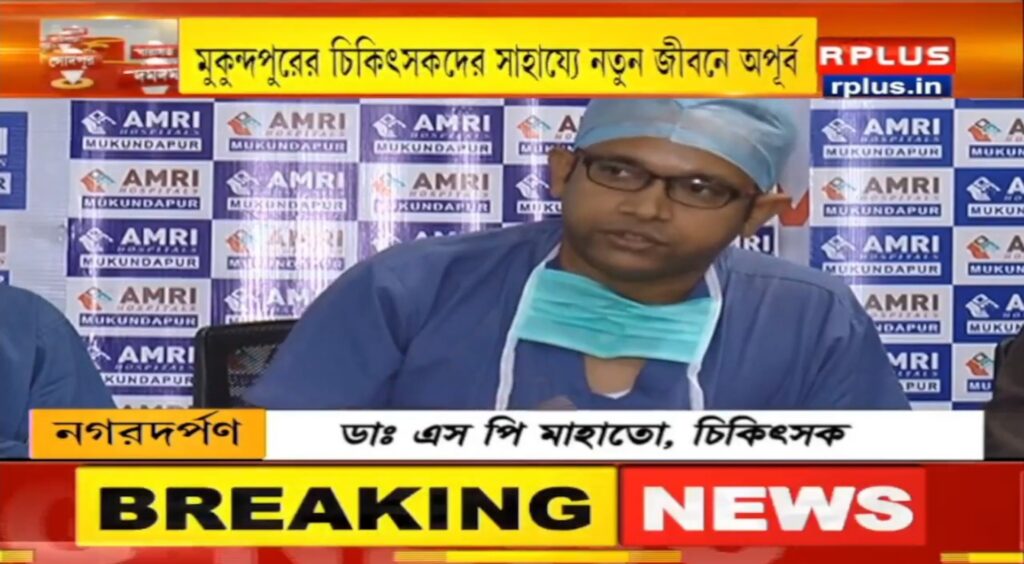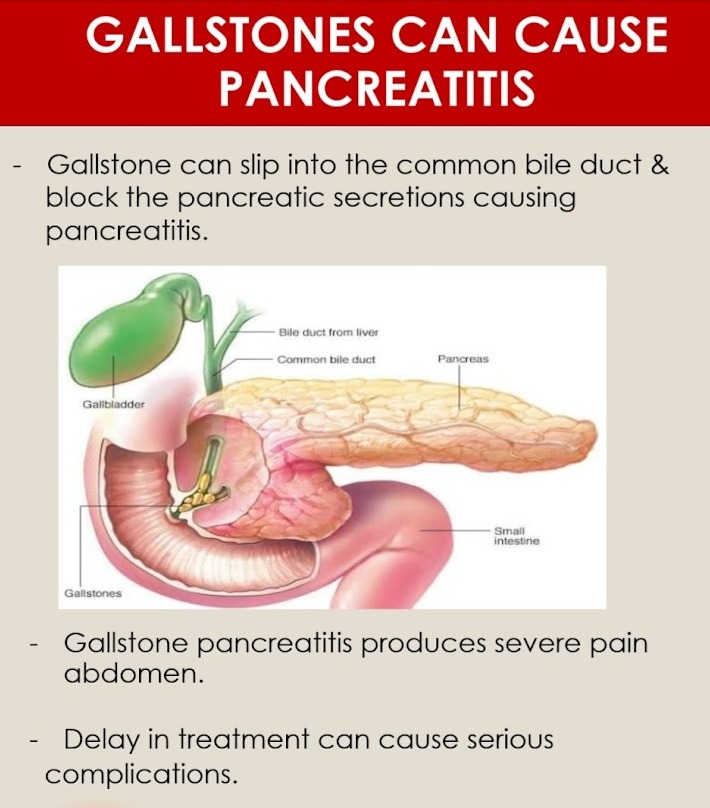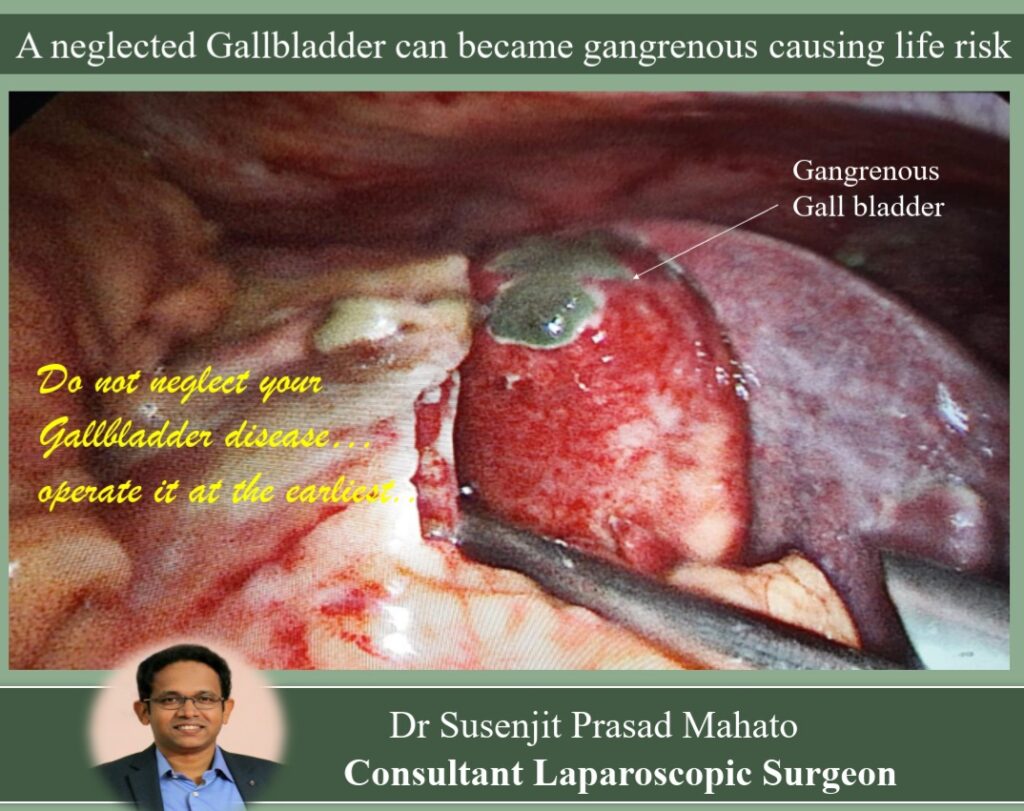



Laparoscopic Gallbladder Surgery: Here is what you need to know
What is the gallbladder?
The gallbladder is a pear shaped sac like structure approximately 8 cm long and 2.5 cm wide, located on the right upper side of our abdomen and attached to the lower surface of the liver. The gallbladder stores bile produced by the liver. The gallbladder releases this bile into the small bowel to help the absorption of dietary fats and fat soluble vitamins.
What are the symptoms of gallbladder stones?
Followings are the common symptoms of a diseased gallbladder containing stones:
- Pain in the right upper side of the abdomen, which may radiate to the back or the shoulder,
- Nausea and vomiting,
- Fatty meal intolerance,
- Early satiety,
- Jaundice and others…
Who needs to have Laparoscopic Gallbladder Surgery?
The major indications is the presence of gallstones and its complications. The presence of gallstones is called cholelithiasis. Gallstones form inside the gallbladder from substances in the bile that become solid. They can be as small as a grain of sand and as large as a golf ball. Some people develop just one gallstone, while others develop many gallstones at the same time.
So one need laparoscopic gallbladder surgery if he/she has the followings:
- Cholelithiasis, i.e. presence of one or more stones in the gallbladder.
- Cholecystitis, which is an inflammation of the gallbladder. types – acute, chronic and gangrenous.
- Gallbladder Polyp
- Cholesterolosis of Gall bladder
- Adenomyomatosis of the Gall bladder
- Biliary dyskinesia, which said to be occurred when the gallbladder doesn’t empty bile correctly due to genetic defect.
- Choledocholithiasis, which occurs when gallstones move to the common bile duct and obstruct the biliary flow resulting in jaundice.
- Gallstone Pancreatitis, which is an inflammation of the pancreas resulting from gallstones.
Normal digestion is possible without a gallbladder. Laparoscopic gallbladder surgery is the treatment of most of the gallbladder related diseases . It is also known as laparoscopic cholecystectomy.


What is a laparoscopic cholecystectomy?
Laparoscopic cholecystectomy is a minimally invasive surgical procedure used to remove a diseased gallbladder. Since the early 1990s, this technique has largely replaced the open technique of gallbladder surgery.
Surgeons perform the procedure through 4 small incisions or ports. The umbilical port is used to introduce a camera (laparoscope) to visualize the inside of the abdomen in a screen. Other three ports are used to introduce long and slender surgical instruments to dissected out the gallbladder from its surrounding structures like liver and bile ducts. Laparoscopic gallbladder Surgery is done under general anesthesia, so that patient sleeps throughout the entire procedure and don’t have any pain during the whole procedure.
A laparoscopic cholecystectomy is less invasive than an open cholecystectomy. This other form of gallbladder removal involves a larger incision and more pain and delayed recovery.
What are the benefits of gallbladder removal?
Removing the gallbladder will stop the pain and stop the future complications caused by gallstones. If gallstones are not treated, pain and infection can get worse and the gallbladder may perforate which is a life-threatening situation. Gallbladder stones are also the leading cause of jaundice and pancreatitis. On the other hand, gallbladder stones are also carcinogenic i.e. having the potential to cause gallbladder cancer in long run.
What are the benefits of laparoscopic cholecystectomy?
The laparoscopic gallbladder surgery has several benefits like:
- less pain.
- less blood loss
- lower risk of complications.
- smaller wounds and scars.
- quicker recovery and return to regular activities / works.
What are the risks or possible complications of laparoscopic cholecystectomy?
Like any surgery, laparoscopic gallbladder surgery has some risks, but these are rare:
- Bile leak,
- Jaundice,
- Bleeding and hematoma,
- Complications of anesthesia,
- Port site hernia,
- Peritonitis (inflammation and infection in the abdomen).
What is the recovery time after Laparoscopic Gallbladder Surgery?
After an uncomplicated Laparoscopic Gallbladder Surgery, patient can go home the same day or within 24hrs of operation. But, with an open cholecystectomy, patient need to stay in the hospital for two to three days.
What should be the care at home after Laparoscopic Gallbladder Surgery?
After laparoscopic gallbladder surgery these are the things to be followed…
- Avoid lifting heavy weight, avoid seating in floor.
- To drink plenty of water and liquids.
- Eat foods high in fiber to help bowel movements.
- Keep the wound dry and clean.
- Slowly increase your activity.
When can one go back to normal activities after laparoscopic cholecystectomy?
Without complications, one should be able to walk and eat normally in one to two days after Laparoscopic Gallbladder Surgery. One usually can return to work and other daily activities in about a week, as long as they don’t involve lifting weight and seating in a floor. You may need a week or two before you are physically or sexually active.
When should patient seek emergency medical attention after gallbladder removal?
If one develop any of the following within a week of laparoscopic gallbladder surgery, he/she should seek emergency help:
- Fever with chills,
- Cramps in the abdomen or severe pain, (mild to moderate pain is common for a few days),
- High fever (over 100 degrees Fahrenheit),
- wound problems like bleeding, swelling or soakage,
- No bowel movement for three days,
- Vomiting,
- Yellow skin,
- Shortness of breath etc.
Conclusion
The best Gallbladder surgeon in Kolkata says that Gallstones can be very painful and dangerous. Laparoscopic cholecystectomy removes the gallbladder and prevents gallstone related complications. Most people fully recover from the minimally invasive procedure in just a weeks. It is better to be get operated at earliest for gallbladder stones than waiting for its dreaded complications to happen.






